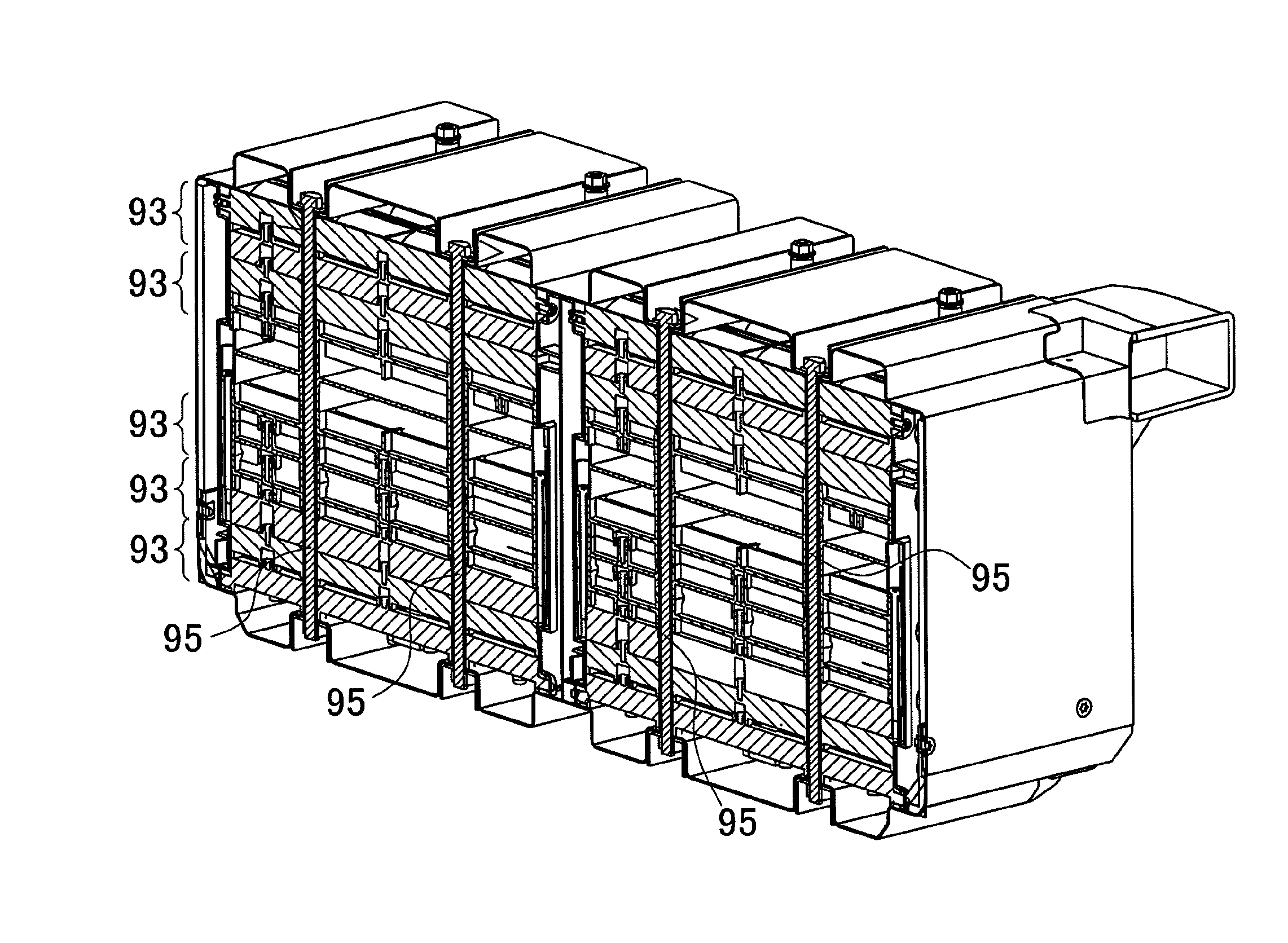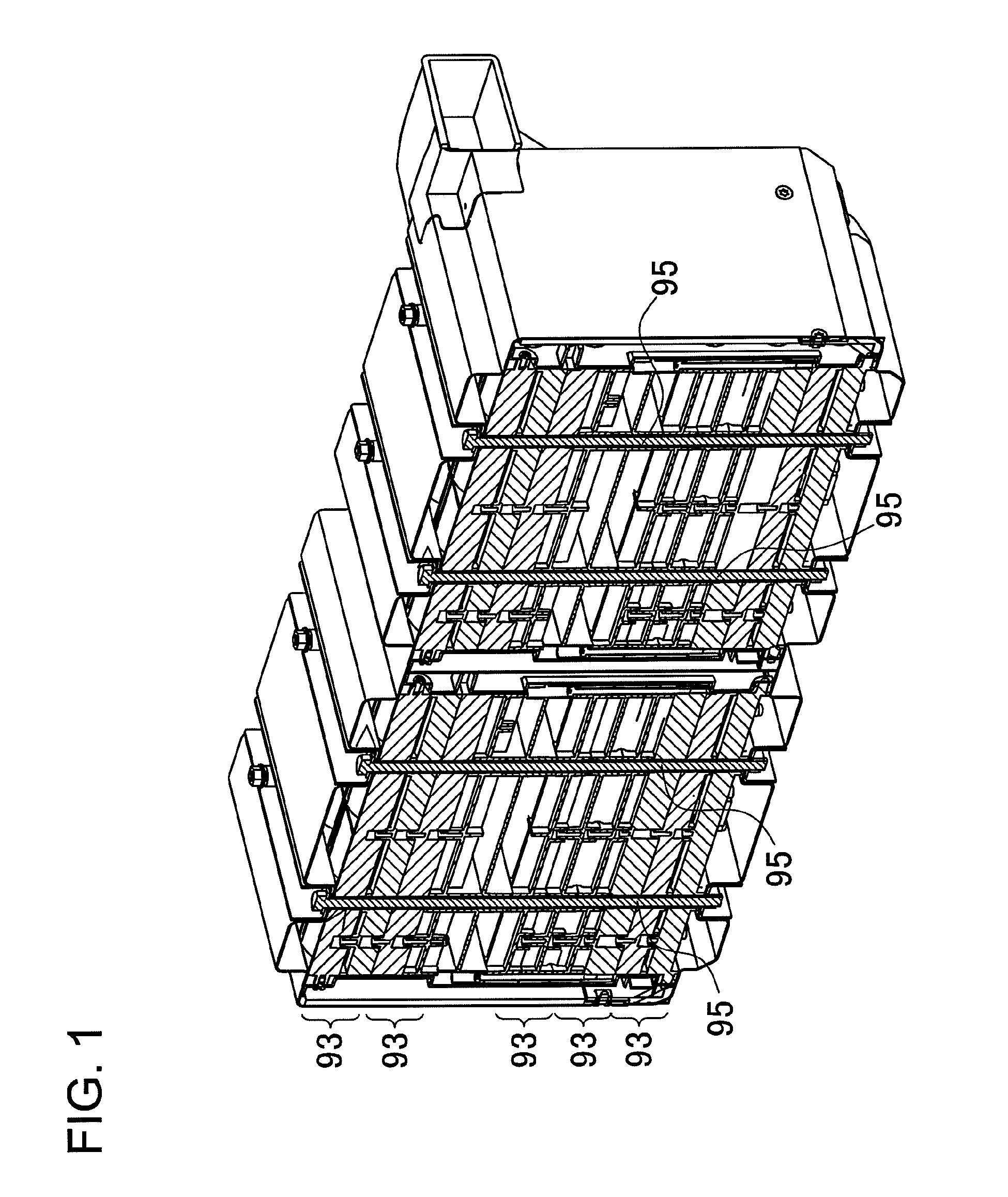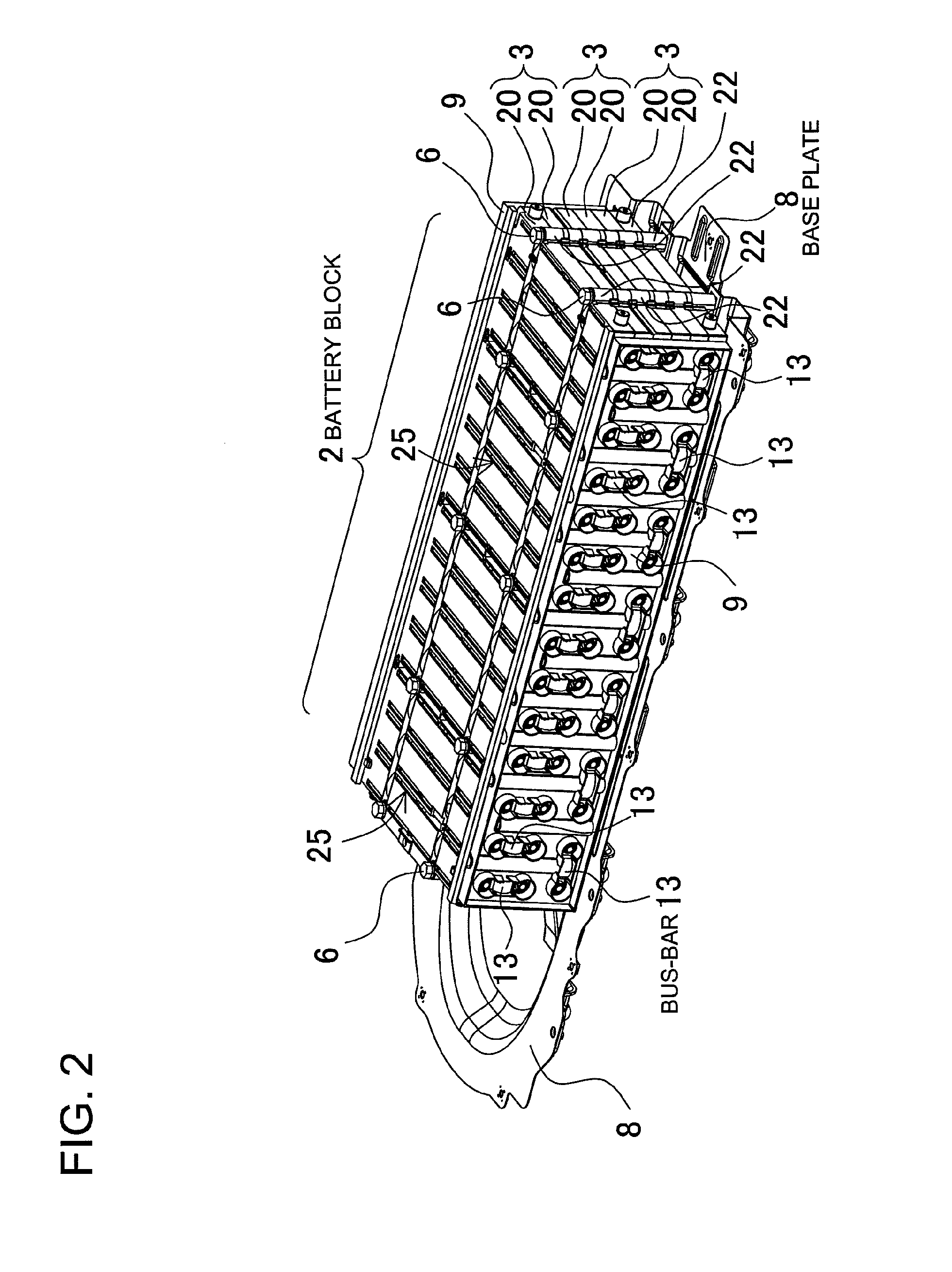Battery system with battery holders
a battery system and battery holder technology, applied in the field of battery systems, can solve the problems of increasing the outline of the battery unit, making the tight connection of the battery unit with its periphery even more difficult, and the difficulty of retaining the battery block at the periphery, so as to achieve the effect of reducing the outline of the battery system and retaining the battery block more robustly
- Summary
- Abstract
- Description
- Claims
- Application Information
AI Technical Summary
Benefits of technology
Problems solved by technology
Method used
Image
Examples
Embodiment Construction
)
[0026]The following describes embodiments of the present invention based on the figures.
[0027]The battery system shown in FIGS. 2-5 is used as a power source apparatus in a hybrid car, and it supplies power to an electric motor that drives the vehicle. However, the battery system of the present invention is not limited to hybrid car power source apparatus applications. The battery system of the present invention can also be used in electrically powered vehicles such as electric automobiles (electric vehicles) or plug-in hybrid cars, or in other power source apparatus applications that require a large output.
[0028]As shown in the figures, six levels of battery holders 20 are retained in a stack to form a battery block 2. Since batteries 1 are disposed between a pair of battery holders 20, two battery holder 20 levels make up a single battery unit 3. Consequently, this battery system has six levels of battery holders 20 and three levels of battery units 3 held in a stacked configurat...
PUM
| Property | Measurement | Unit |
|---|---|---|
| perimeters | aaaaa | aaaaa |
| perimeter | aaaaa | aaaaa |
| diameter | aaaaa | aaaaa |
Abstract
Description
Claims
Application Information
 Login to View More
Login to View More - R&D
- Intellectual Property
- Life Sciences
- Materials
- Tech Scout
- Unparalleled Data Quality
- Higher Quality Content
- 60% Fewer Hallucinations
Browse by: Latest US Patents, China's latest patents, Technical Efficacy Thesaurus, Application Domain, Technology Topic, Popular Technical Reports.
© 2025 PatSnap. All rights reserved.Legal|Privacy policy|Modern Slavery Act Transparency Statement|Sitemap|About US| Contact US: help@patsnap.com



